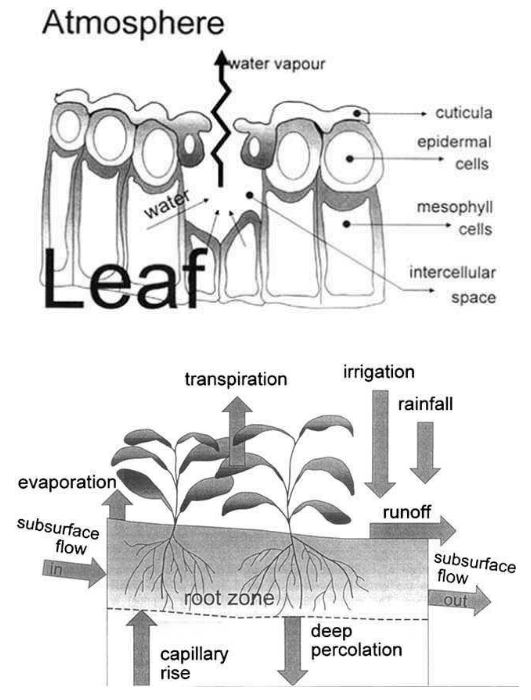By Holloway Ag
Join us for this three-part series on Determining Water Needs for Your Field. As the temps continue to stay high, and many growers enter thier last irrigation cycle of the season, it is especailly important to make sure you are using the right amount of water and that it is working hard for your field. Please enjoy Part 1 and read the follow-up, Part 2: Evapotransportion and ETo Zones. Look for Part 3 to be published soon.
Part 1: Evaporation and Transpiration
What they are and how they work together to determine your field’s Evapotranspiration (ET).
Evaporation on the Soil Surface
Evaporation is the process of liquid water converting into water vapor (vaporization) and removed from the evaporating surface (vapor removal). Water evaporates from many surfaces, including lakes, rivers, pavements, soils and wet vegetation.
Solar radiation, air temperature, air humidity and wind speed are all things to consider when assessing evaporation. Energy is required to change the state of water from liquid to vapor. Direct sun and, to a lesser extent, the air temperature provide this energy. The dryer the climate, the more evaporation will occur. If the air is humid, the process of evaporation slows down because the air is already saturated. Wind speed has a great deal to do with how quickly or slowly evaporation will happen as well. Wind can push humid air out and bring dryer air in or, which increases evaporation.
When evaporation happens on the soil surface, the amount of shading of the crop canopy and the amount of water available at the evaporating surface are other factors that affect the evaporation process. Frequent rains, irrigation and water transported up from a shallow water table wet the soil surface. Where the soil is able to supply water fast enough to satisfy the evaporation demand, the evaporation from the soil is determined only by the weather conditions. However, where the gaps between rains and irrigation are large, and the ability of the soil to conduct moisture to the surface is small, the water content in the topsoil drops and the soil surface dries out. When this happens, the limited water plays a big part in soil evaporation. In the absence of a water supply to the soil surface, evaporation decreases rapidly and may stop almost completely within a few days.
Transpiration within Crops
Transpiration is the vaporization of liquid water contained in plant tissues and the vapor removal to the air. Crops predominately lose their water through stomata. These are small openings on the plant leaf through which gases and water vapor pass. The water, together with some nutrients, is taken up by the roots and transported through the plant. The vaporization occurs within the cells of the leaf and the vapor removal into the air is controlled by the stomatal aperture. Nearly all water taken up is lost by transpiration with only a tiny fraction used within the plant.
Schematic representation of a stoma

Transpiration, like evaporation, depends on the sun, vapor pressure gradient and wind. Therefore, the sun, air temperature, air humidity and wind should be considered when assessing transpiration. The soil water content and the ability of the soil to conduct water to the roots also determine the transpiration rate, as do waterlogging and soil water salinity. The transpiration rate is also influenced by crop characteristics, environmental aspects and cultivation practices. Different kinds of plants may have different transpiration rates. Not only the type of crop, but also the crop development, environment and management should be considered when assessing transpiration.
Read Part 2 in our series: How to Determine the Evapotransporation and ETo Zones for Your Field.
Coming soon! Part 3 in our series: Determining water in acre inches per crop.
Join Over 800 Companies Using Holloway Today.
Or Become Part of The Holloway Group to Further Your Career.

